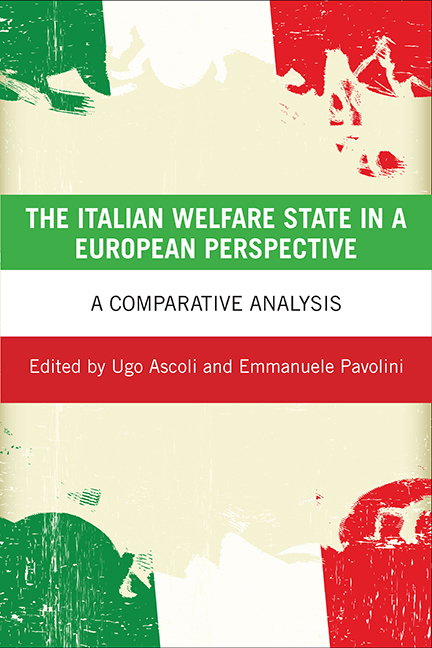Introduction
Published online by Cambridge University Press: 08 March 2022
Summary
This book explores the evolution of the Italian welfare state over recent decades. It frames the Italian experience in a European comparative perspective at precisely the time when it is being buffeted by the economic crisis and the consequent austerity measures. Over the past two decades, transformations in social needs and the economy, on the one hand, and in social policies, on the other, have been reshaping the Italian welfare system.
Consideration of the Italian experience may be interesting from an international perspective both for those concerned with Southern Europe, given that Italy has traditionally represented an ideal-type of the Southern European welfare state model (Ferrera, 1996), and for those interested in comparative welfare state analysis and, more generally, European studies. Italy is among the most prominent European economies in terms of gross domestic product (GDP) and population, and it is one of the countries that have been hardest hit by the recent economic crisis and the subsequent austerity measures. Italy has been placed under observation by the European Union (EU), which has requested and fostered numerous reforms, mostly affecting the welfare state. How the Italian welfare state and social inequalities are also changing as a consequence of the crisis (and the relative austerity plans) is good ground for analysis of how the relationship between the EU and individual member states is evolving.
The main traditional specific features of the Italian welfare state during the ‘golden age’
During the ‘golden age’ of the European welfare state after the Second World War, social policies in Italy grew strongly in terms of expenditure, generosity and coverage. As documented in Flora and Heidenheimer (1981), during the 1970s, the Italian situation was close to the average of the other Western European countries. However, at the beginning of the 1990s, the Italian welfare state model presented four main specificities in the European context: a mixed paradigm; a particularistic/clientelistic nature; a dual and fragmented model of functioning; and a familistic approach.
The mixed paradigm logic
The Italian welfare state adopted different forms of operational logic in different policy sectors (Ascoli, 1984; Ferrera, 1984), as follows:
• a strictly traditional ‘corporatist’ approach in pensions and unemployment policies, albeit with a high level of fragmentation along occupational lines;
• a ‘universalistic’ approach in health care and education; and
• a scant development of social assistance and social care.
- Type
- Chapter
- Information
- The Italian Welfare State in a European PerspectiveA Comparative Analysis, pp. 1 - 18Publisher: Bristol University PressPrint publication year: 2015

